Our Story
Glio (YC S13) was founded by Roberto Riccio and João de Paula, becoming the first Latin American startup to be accelerated by Y-Combinator.
Our relationship started in a Brazilian startup incubator where I would constantly help them with design tips while working at another startup called Sieve.
After they came back from the Y-Combinator program and raised funds in California, they invited me to join and start what would be an amazing journey of hard work, learning, and great results.
It was my first contact with user-focused metrics, A/B/n testing, and where I learned the importance of using quantitative data to measure the impact of my designs. Our obsession with building great quality products and finding product-market-fit made us learn and get immersed in metrics, experimentation, and ruthless prioritization.
Known at first as Yelp for Latin America, we pivoted two times. First, as a Brazilian payments solution for international companies and later turned into a beauty marketplace that aimed to become Amazon for Latin America with the lowest prices in the market.
Work
As the only designer in the company, I was responsible for the product design and front-end code (HTML/CSS/JS), including Web and Mobile apps, websites, and internal tools.
Glio Marketplace (2015-2018)
It's common for marketplaces like Amazon (not present in Brazil at this time) and Mercado Livre, as there are multiple sellers, to display several listings for the same product. Compared to non-marketplace shops, it's a confusing experience that creates friction and untrustworthiness.
We built a marketplace where it wouldn’t matter for our customer how many sellers were offering the same product. We would only show one listing. The seller with the lowest price was the one to be shown on the product page, as long they had enough stock. That created a healthy margin and stock dispute and guaranteed the lowest prices for our customers.
Knowing that Beauty & Personal Care is a US$30 billion sector in Brazil, we decided to start our marketplace selling perfumes and cosmetics.
Through the knowledge gathered from A/B/n testing, Usability Testing, and User Interviews, we understood better our customers and conversion drivers, leading us to achieve expressive results.
- 20% MoM growth
- 233% increase in the conversion rate
From 1.5% to 5% for first purchases (above market standards of 2-4%)
- 80+ Net Promoter Score
Designing with Data
We made A/B testing practical and fast, delivering more than 2,000 in 4 years. That approach gave us positive results but, with time, our product started losing the sense of craftsmanship and high-quality design, points that we judged of high importance for offering a great product to our customers.
I started dedicating more time to the design stage before delivering an A/B test, improving the UI quality of our experiments without losing performance. For UX it didn’t change much since we always focused on the easiest and quickest experiences.
If we were slowing down the pace of experiment delivery, we needed to be sure that we would also increase our assertiveness. We increased the number of user interviews to identify the underlying “why” of each experiment, leading us to better and more assertive hypotheses.
Better knowledge > Better design > Better experiments > Better results.
Main Conversion Drivers
By understanding our data, we saw that trust and ease of use were the biggest reasons to increase conversions, so most of our experiments were focused on:
- Communicating that our website was trustworthy.
- Simplifying search and purchase funnels.
- Improving post-sales communication and transparency.
- Showcasing the high-quality customer service where we put the customer first while taking some risks by doing it.
- Displaying others’ experiences when purchasing with us.
- Understanding audience expectations.
- We had the lowest prices in the market and the website's “cheap” look was an important factor, as it was closer to the reality of our proposition and target audience.
Glio Payments (2015)
Between being Yelp and Amazon for Latin America, we pivoted to enable international companies to sell products, bill customers, and issue Brazilian invoices without the need to open a Brazilian entity.
In 4 months, while our lawyers analyzed the legislation requirements and new business structure, I designed a new logo, a new website, our plug-and-play checkout plugin, and a portal for clients. I also did the front-end development (HTML/CSS/JS).
We tested our MVP with Cambly (YC W14) before pivoting.
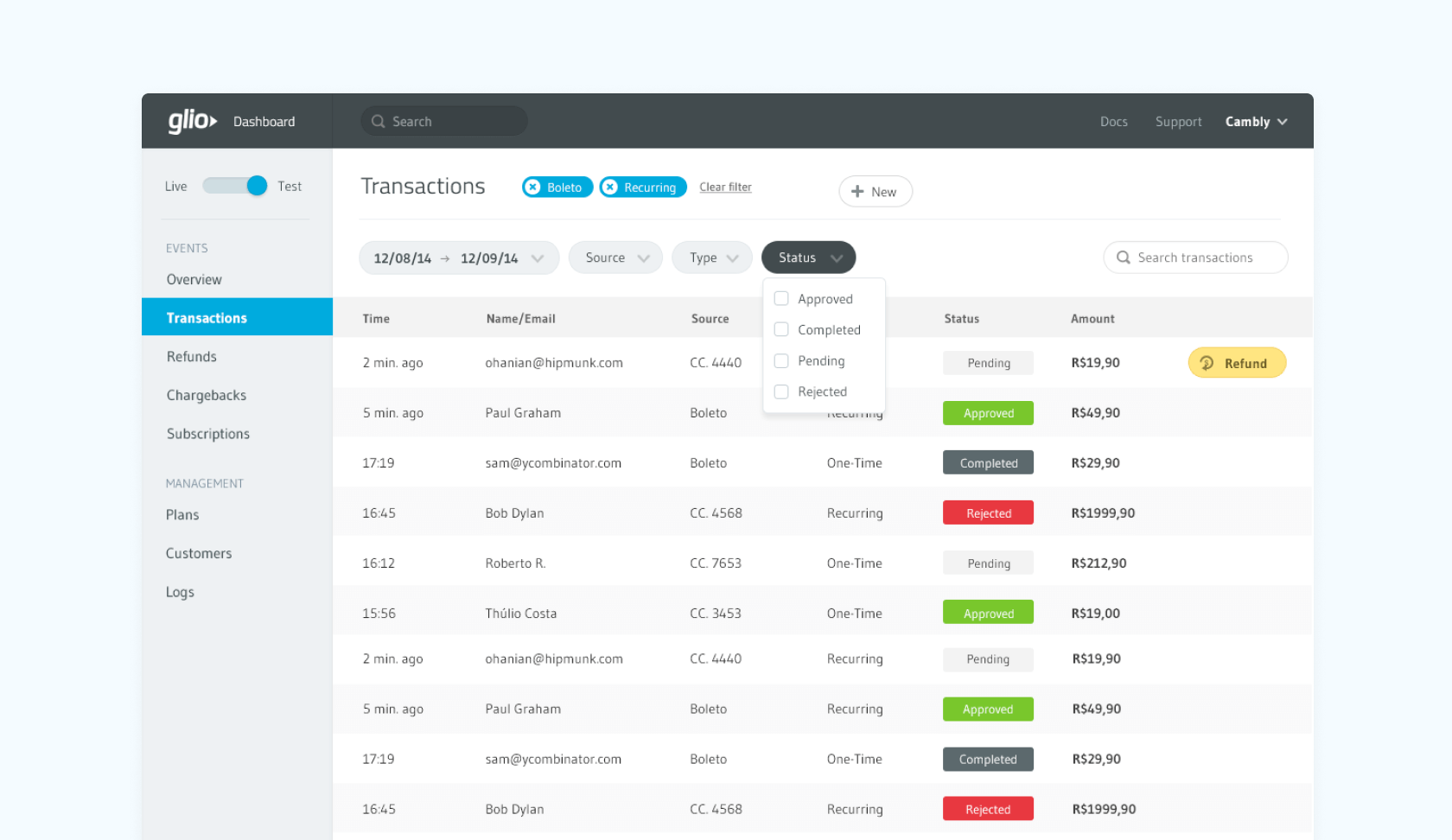 2015 - Portal MVP for companies to manage their brazilian customers transactions.
2015 - Portal MVP for companies to manage their brazilian customers transactions.
 2015 - Transaction details page of the Portal MVP.
2015 - Transaction details page of the Portal MVP.
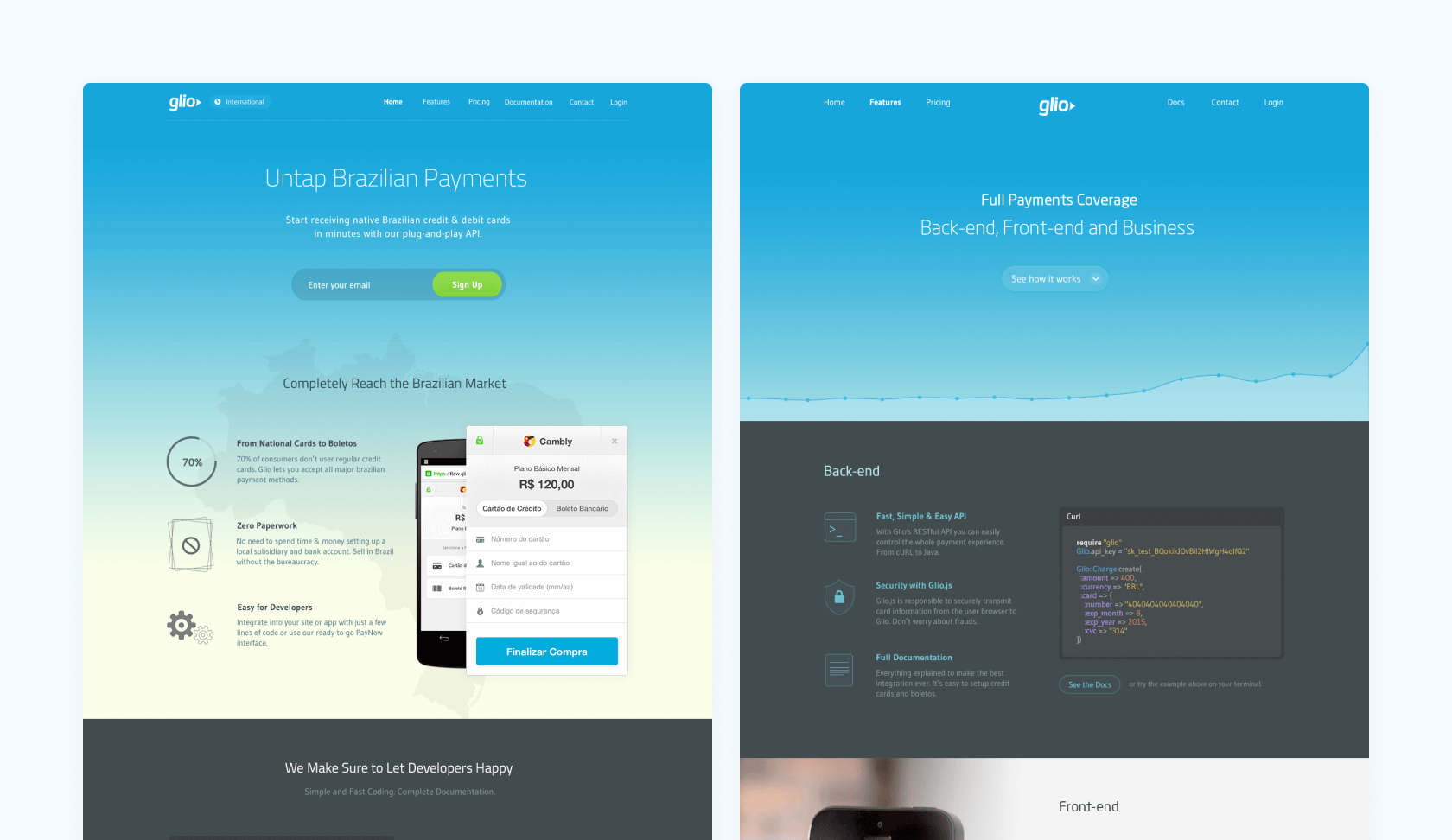 2015 - Website displaying our Stripe-like plug’n play checkout and API integrations.
2015 - Website displaying our Stripe-like plug’n play checkout and API integrations.
Glio for Local Business (2013-2015)
Glio started its trajetory as a local business review platform, helping users to choose the right place to go. When I began at the company, we redesigned from the ground up the entire platform, removing unnecessary features and focusing on the two most important flows: search and reviews.
Through A/B tests and KPIs, we adjusted our user flows to increase engagement and validate market possibilities. As part of my responsibilities I was doing Product Design and Front-end development.
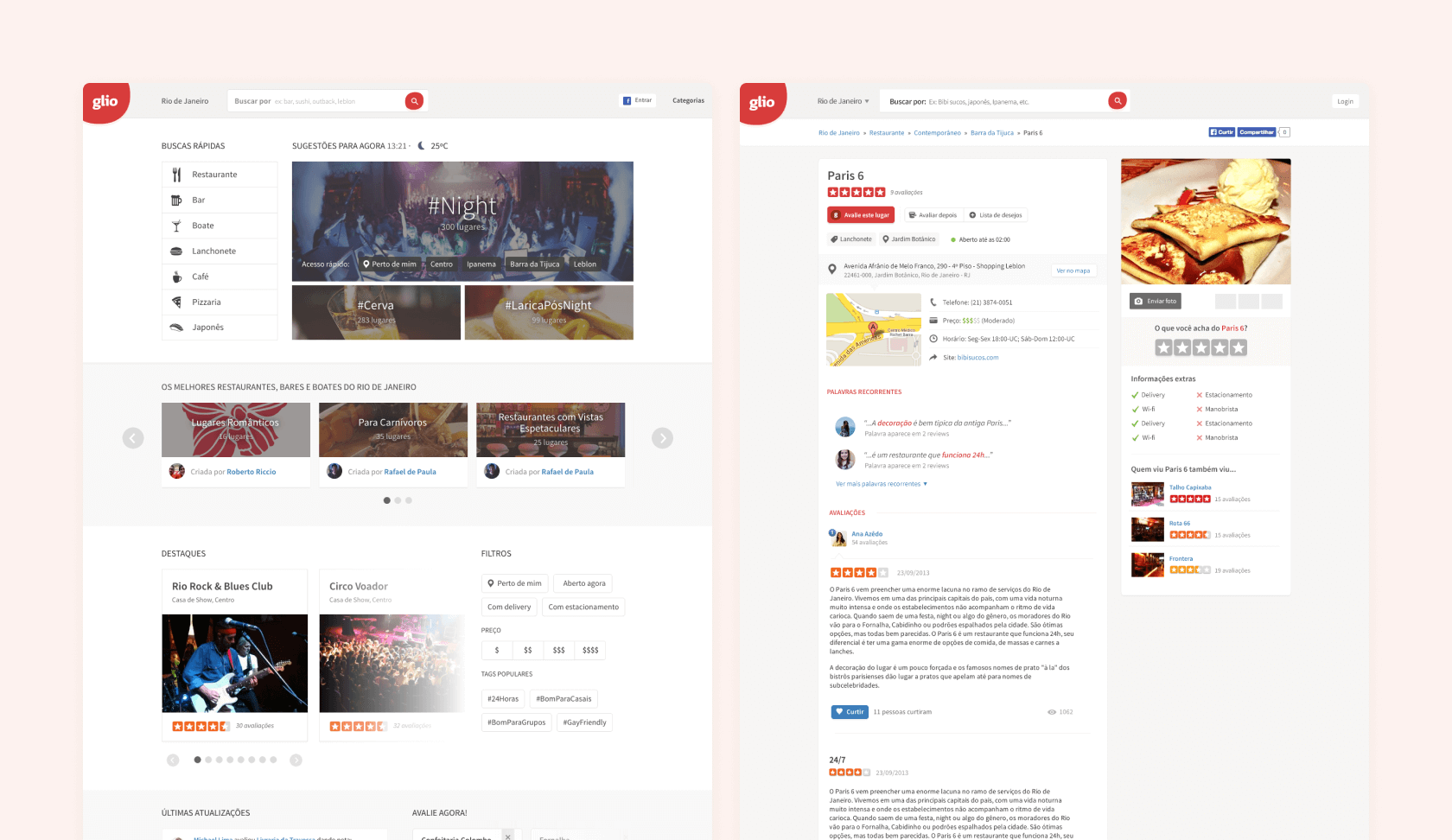 2015 - Latest home and business pages to be live before we pivoted. Winner versions from multiple A/B tests.
2015 - Latest home and business pages to be live before we pivoted. Winner versions from multiple A/B tests.
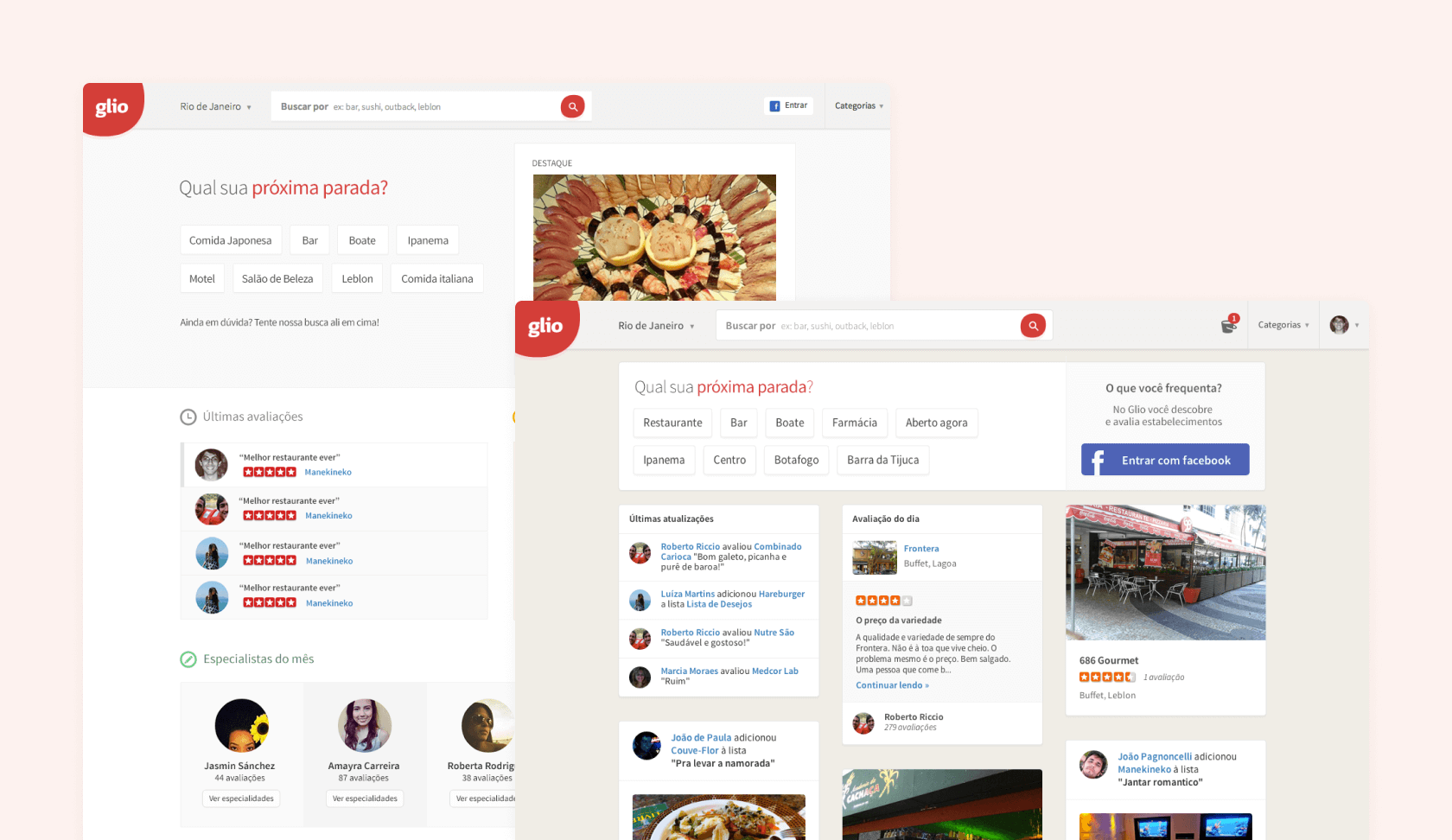 2014 - Two different A/B test experiments focused on increasing number of sign-ups. On Wayback Machine
2014 - Two different A/B test experiments focused on increasing number of sign-ups. On Wayback Machine
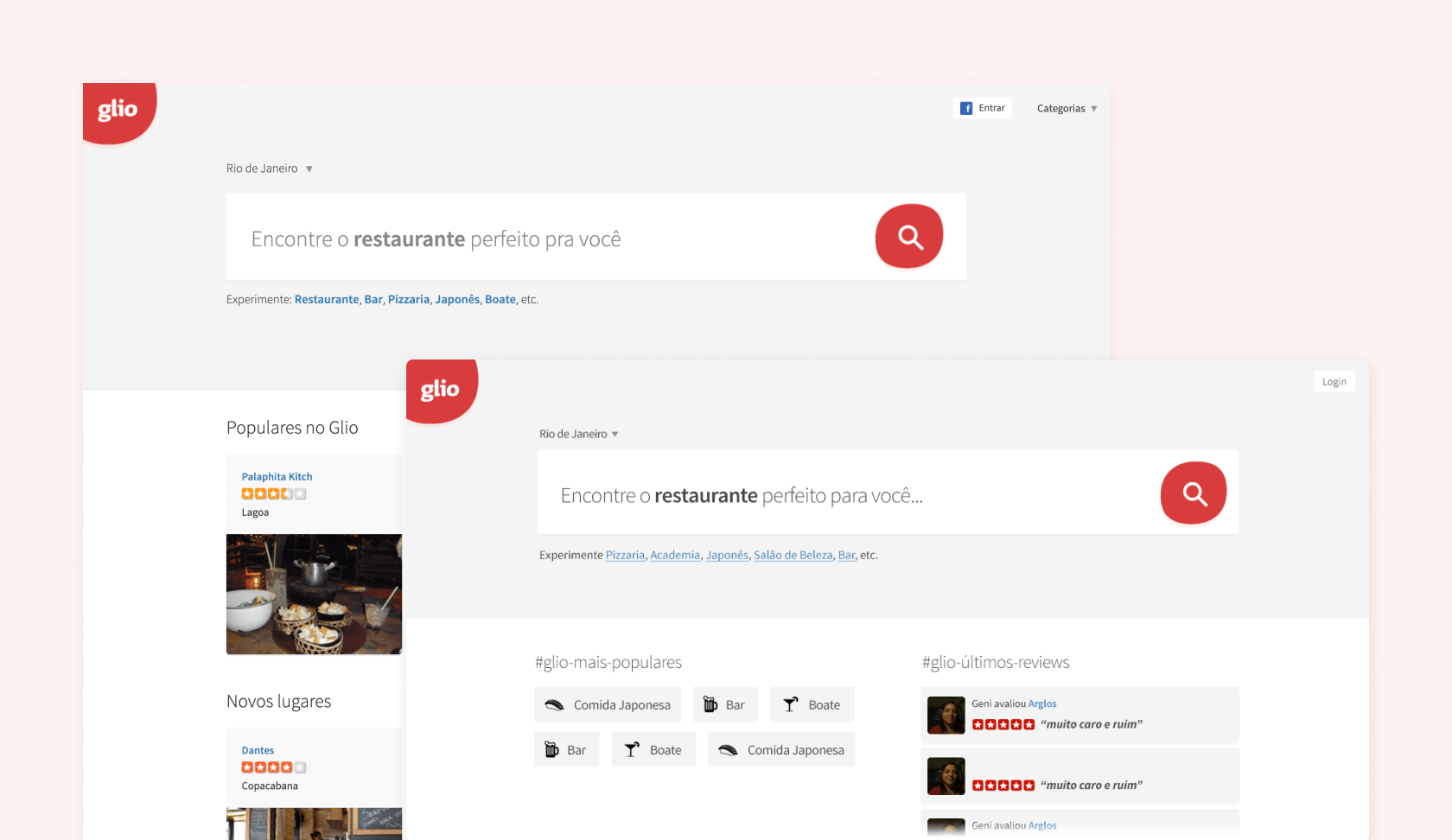 2014 - Our first websites of the data-oriented generation. We analyzed data, removed unnecessary features and got more focused on search and recommendations. First time we had metrics and A/B testing. On Wayback Machine
2014 - Our first websites of the data-oriented generation. We analyzed data, removed unnecessary features and got more focused on search and recommendations. First time we had metrics and A/B testing. On Wayback Machine
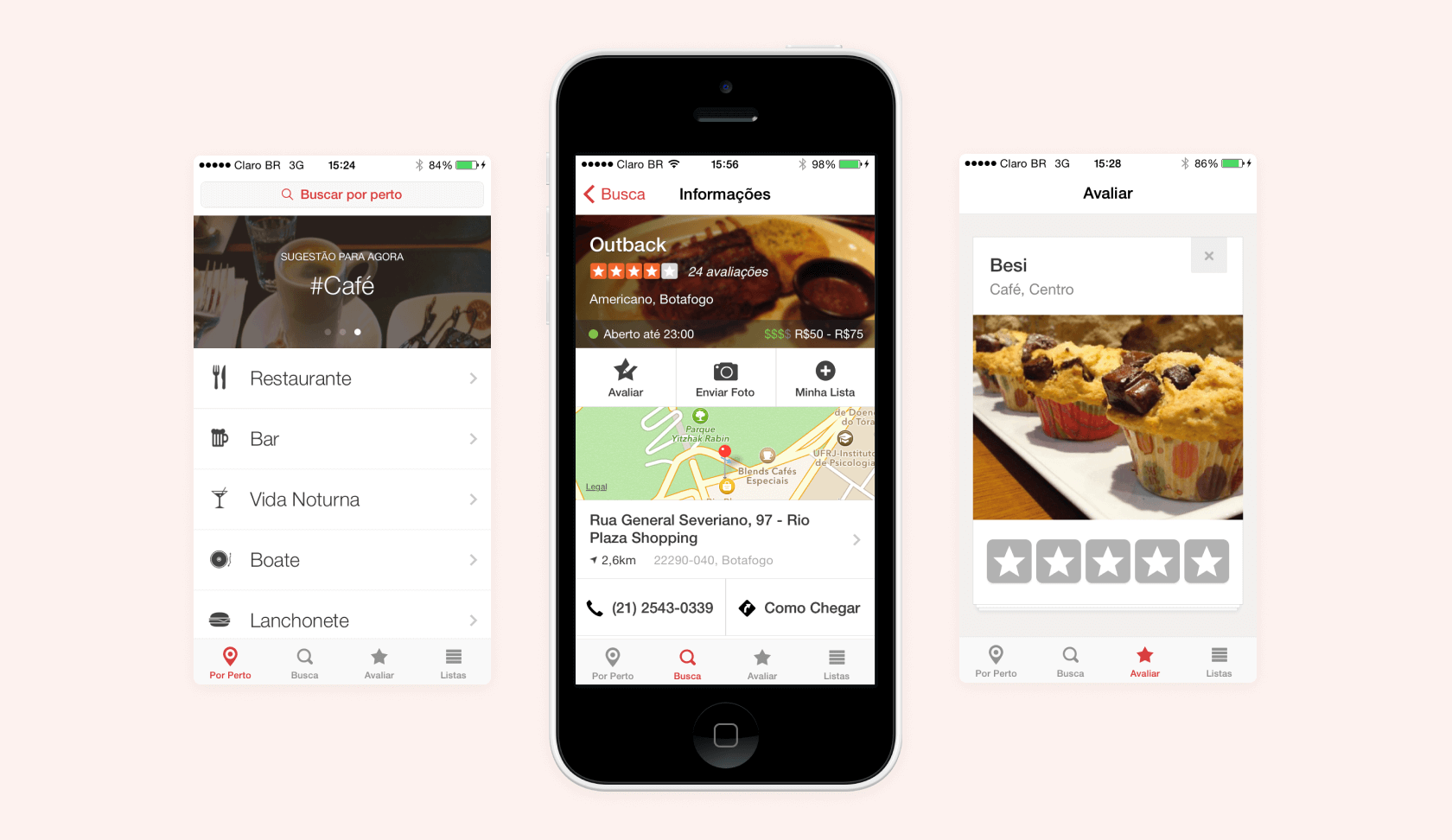 2014 - Our mobile app for iOS 9 and a Tinder-like experiment to increase number of reviews.
2014 - Our mobile app for iOS 9 and a Tinder-like experiment to increase number of reviews.
